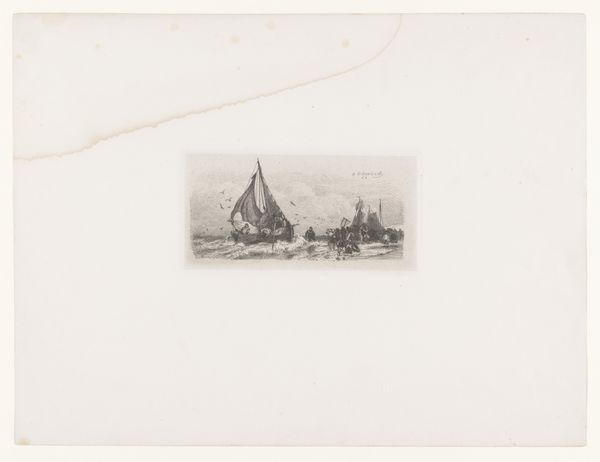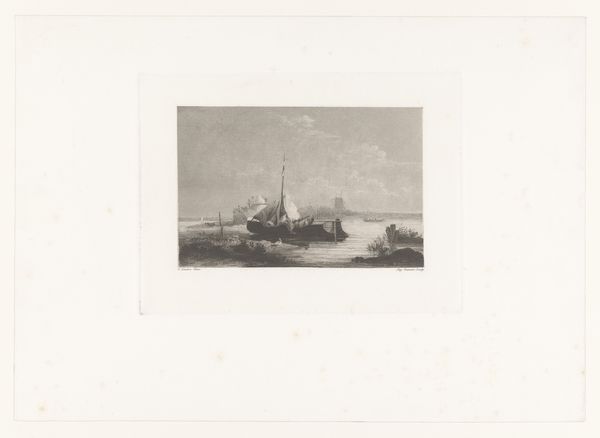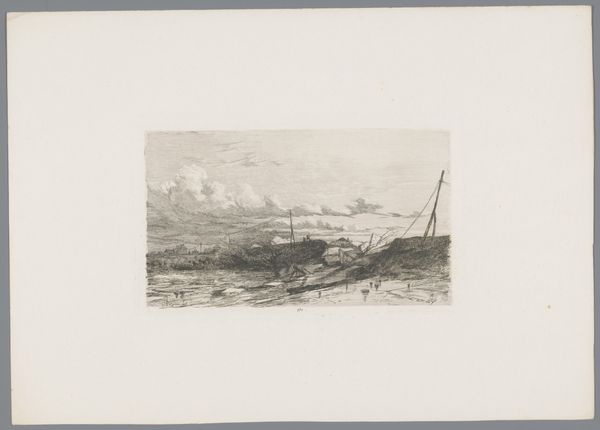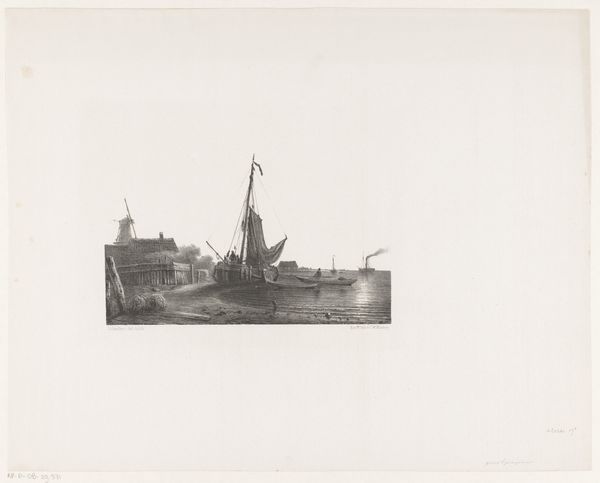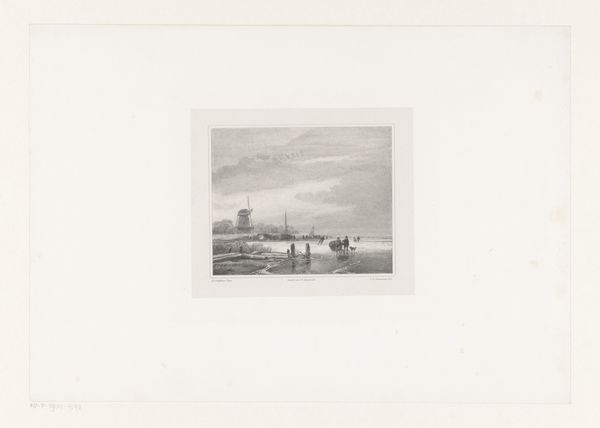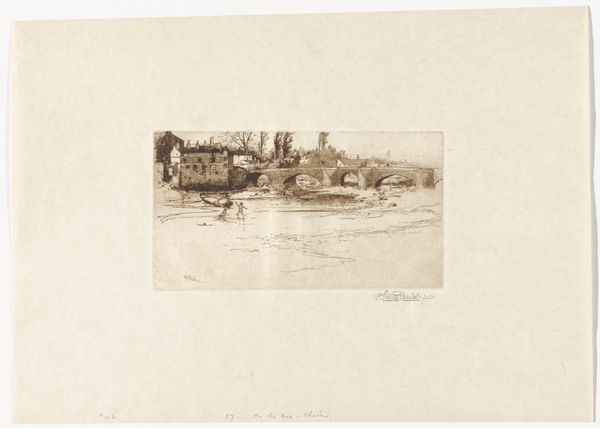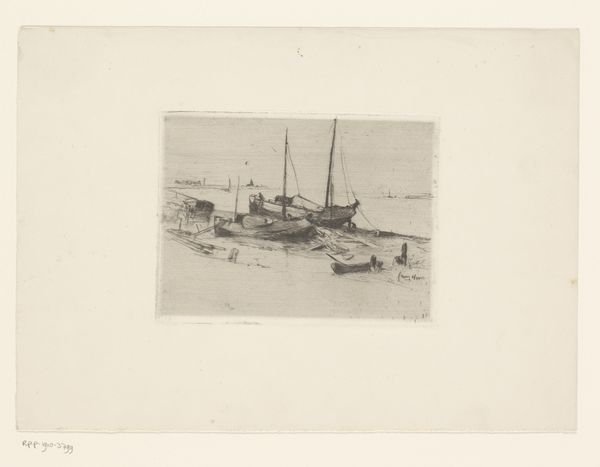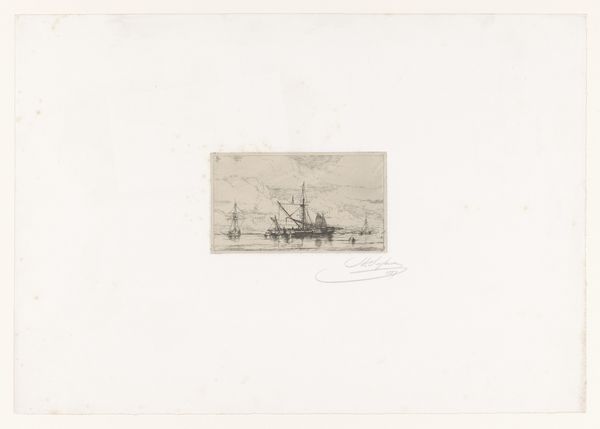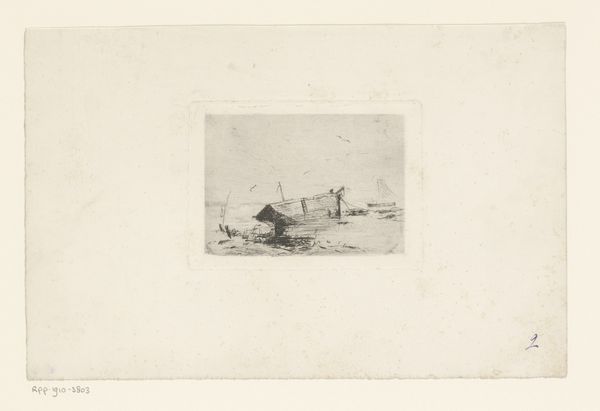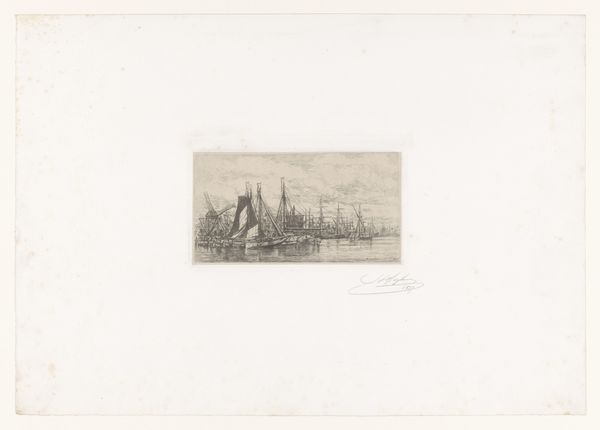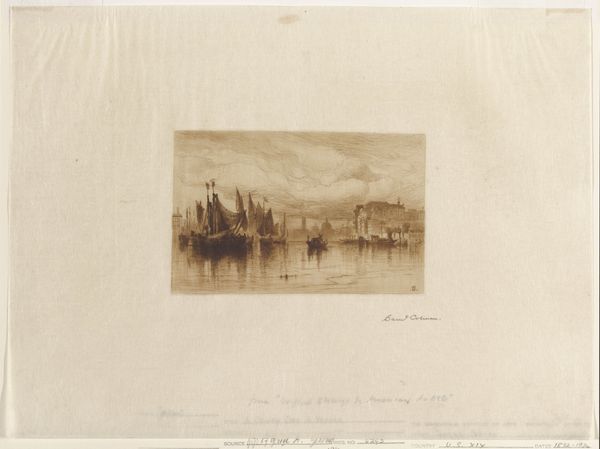
drawing, print, etching
#
drawing
# print
#
etching
#
landscape
#
watercolor
#
realism
Dimensions: 2 5/8 x 4 7/8 in. (6.67 x 12.38 cm) (plate)9 1/16 x 12 in. (23.02 x 30.48 cm) (sheet)
Copyright: Public Domain
Editor: This is Charles Adams Platt's "Provincial Fishing Village" from 1882, made using etching. It gives me a sense of quiet, everyday labor. What do you see in it? Curator: The etching medium itself speaks to the rise of printmaking as a form of democratized art, where images became more accessible to the growing middle class. Consider the materials involved – the copper plate, the acid, the paper – each reflecting specific industrial processes. How does the seemingly mundane subject matter relate to broader economic shifts in late 19th century society? Editor: That’s interesting, I was just looking at it as a kind of realistic depiction of boats. I hadn't thought about the production process at all. Curator: Think about who is consuming this image. An etching like this, compared to, say, an oil painting, becomes a commodity available on a wider market. What kind of narratives about labor and leisure are being produced and consumed through these images? Is there a tension between romanticizing a "provincial" life while simultaneously being made possible through industrial processes? Editor: So it's almost like a manufactured nostalgia? An artwork showing a 'simple' fishing village made through complex industrialized means and consumed by city dwellers? Curator: Precisely. The print also invites a deeper questioning of the conditions of artistic production. Platt isn't just representing a scene, he's participating in an economic system through the choices of his materials and techniques. Editor: I see your point! It reframes the entire image, knowing it’s not just a snapshot of a village, but part of a much larger economic picture. Thanks! Curator: And by understanding that economic context, we can really dig into the significance of what these artworks were meant to represent.
Comments
No comments
Be the first to comment and join the conversation on the ultimate creative platform.

